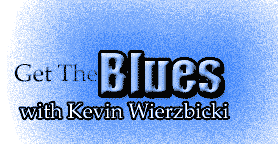
The effort begins with "Movement I - Filisko's Dream - Symphonic Blues No. 6" where, at the beginning, Siegel blows some blues harp that recalls that heard in many train songs, but players in the 25-or-so member orchestra soon turn the cut into a very cinematic number as violins buzz like happy bees, cellos waddle through the arrangement, and percussion instruments shout "Hey, I'm here too!" Siegel's harmonica playing threads the whole parade together, acting sort of like the conductor's baton during the sprightly cut. Any notions that Symphonic Blues No. 6 is going to be a stuffy affair are quickly dispelled. The opening suite is in three movements, with the second being "Movement II - Slow Blues - Symphonic Blues No. 6," a sublime passage where Siegel's harp is a bit mournful at times and where the orchestra adds an air of reflection; "Movement III - Allegro - Symphonic Blues No. 6" is just the opposite as the orchestra hits a cheerful high with what could easily be a portion of a perky soundtrack to an animated film, all gloriously Disney-esque in style. Siegel gives the orchestra a bit of time before introducing his blues harp into the mix; by that time the listener is already swaying and bopping to the lush music. The three movements are all lengthy and are about 25 minutes in total.
The album's briefest piece is "CODA for Tabla and Harmonica" which grabs the listener immediately thanks to unusual and very catchy scat singing from Kalyan Pathak who also plays tabla on the cut; the Indian-flavored cut is quite the change from what precedes it, with Siegel's harp and the orchestra eventually chiming in to offer a sort of response to Pathak's vocal. You might expect "Wrecking Ball Sonata" to be bombastic but the cut is a violin-centric number that's also the only vocal cut on the record as Siegel offers up lyrics that equate the effects of lying to those of a wrecking ball. Pathak plays more tabla here but more as a straight bit of percussion as opposed to Indian flavorings. "Opus 11 for Solo Violin" closes the album and the song's title says it all; the cut is a showcase for Jaime Gorgojo who is one of two featured violinists here; there is no harmonica on this cut. Other instruments featured on the album include flute, clarinet, oboe, French horn, trumpet, tuba, trombone and contrabass with players coming from vaunted outfits like Chamber Blues, the Chicago Symphony Orchestra, Elgin Symphony Orchestra and others. A nice booklet that tells Corky's story and the story of the album is included in the CD package and somewhat unusually, the text of the booklet is included in audio form (spoken by Siegel) on the CD after the music.
Rating:![]()
![]()
![]()
![]()
Share this article
Tim Gartland - Right Amount of Funky
The Blues: Corky Siegel - Symphonic Blues No. 6
Quick Flicks: The Million Eyes of Sumuru
Bob James & Dave Koz - Just Us
Why Guns N' Roses Icon Slash Left X (Twitter)
Kirk Hammett The Collection: Live Events Announced
Supergroup Isles & Glaciers' Debut EP Gets Special Vinyl Reissue
Watch Skunk Anansie's 'Lost And Found' video
Adrian Smith and Richie Kotzen Mark Album Release With 'Outlaw' Lyric Video
Warkings To Deliver 'Armageddon' On July 4th With Title Track Out Now
Dropsonic End 15-Year Hiatus With William DuVall Co-Produced Album
Deerhoof Recruit Saul Williams For 'Under Rats'